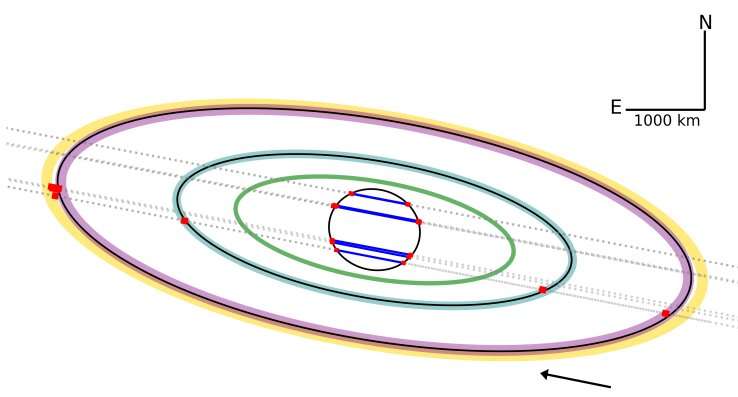April 28, 2023 report
This article has been reviewed according to Science X's editorial process and policies. Editors have highlighted the following attributes while ensuring the content's credibility:
fact-checked
peer-reviewed publication
trusted source
proofread
Second ring found around dwarf planet Quaoar

A large international team of astronomers has discovered that the dwarf planet Quaoar is circled by a second ring. In their study, accepted for publication in the journal Astronomy & Astrophysics, the group discovered the second ring while they were studying the first known ring.
Quaoar is a dwarf planet in the Kuiper belt. It was discovered by astronomers Michael Brown and Chad Trujillo in 2002. Since that time, studies have shown it to be approximately 1,110 km in diameter, which is approximately half the size of Pluto. Researchers have also found that it has water ice on its surface and has signs of cryovolcanism. It also has a small moon named Weywot. Both the planet and its moon were named after Native American mythological figures.
In February of this year, a ring was discovered around Quaoar, which called into question theories regarding how ring systems and moons form. In this new effort, the research team found a second ring.
Both rings lie beyond the Roche limit, which contradicts theories that describe how moons and rings form. Previously, researchers believed that material within the Roche limit should be pulled apart by tidal forces, meaning a ring should form. Material outside of the Roche limit, theory suggests, should coalesce, forming a moon. Why this it not the case with Quaoar is unknown and has led some to begin questioning such theories. Others suggest the rings could have formed due to the location of Weywot.
Neither of the two rings is visible using an ordinary telescope; both were found indirectly when Quaoar happened to pass over light from distant stars behind it. Dimming of the starlight in a certain way revealed the presence of a single ring last February. When another occultation occurred more recently, scientists were ready and pointed their equipment at the planet and its newly found ring. They were able to learn more about both—they found, for example, that the ring has a dense core that is just a few miles wide. They plan to study the second ring during future occultations.
More information: C. L. Pereira et al, The two rings of (50000) Quaoar, Astronomy & Astrophysics (2023). DOI: 10.1051/0004-6361/202346365. On arXiv: DOI: 10.48550/arxiv.2304.09237
Journal information: Astronomy & Astrophysics , arXiv
© 2023 Science X Network





















